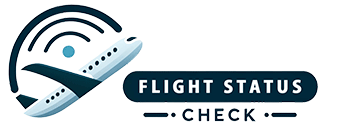The Future of Air Travel: A Look at the 2033 Flight Status
It’s hard to believe that just a few decades ago, the thought of flying in a massive metal tube through the sky was nothing short of a miracle. Fast forward to 2033, and air travel has become a routine part of everyday life for millions of people around the world. But what does the future hold for the aviation industry, and what can we expect from the 2033 flight status?
Let’s start by taking a closer look at the current state of air travel. As of 2021, the global aviation industry was facing numerous challenges, including the COVID-19 pandemic, fluctuating fuel prices, and environmental concerns. However, despite these hurdles, the industry has continued to innovate and adapt, setting the stage for what promises to be a truly exciting future.
One of the most eagerly anticipated developments in the world of air travel is the widespread introduction of electric and hybrid aircraft. With the push for greener technology and sustainable practices, major manufacturers and airlines are investing heavily in the development of electric propulsion systems. In fact, some experts predict that by 2033, a significant portion of the global fleet could be powered by electricity, greatly reducing the industry’s carbon footprint.
On the topic of innovation, the 2033 flight status is also poised to be heavily influenced by advancements in supersonic and hypersonic travel. With companies such as Boom Supersonic and Aerion Supersonic leading the charge, it’s entirely possible that by 2033, commercial supersonic flights will once again become a reality. Imagine being able to travel from New York to London in just a few hours, or from Tokyo to Los Angeles in half the time it takes today. The possibilities are truly mind-boggling.
Of course, no discussion of the future of air travel would be complete without mentioning the rise of autonomous and remotely piloted aircraft. While the idea of unmanned commercial flights may sound like something out of a science fiction movie, the reality is that major players in the industry are actively exploring the potential of this technology. Not only could it lead to greater efficiency and cost savings, but it could also help address the ongoing pilot shortage that has been a concern for the industry in recent years.
As we look ahead to 2033, it’s clear that the aviation industry is on the brink of some truly groundbreaking changes. However, it’s important to remember that along with these advancements come several challenges and considerations. From addressing airspace congestion to ensuring the safety and security of passengers and crew, the industry will need to navigate a complex web of regulatory, technical, and operational issues.
In conclusion, the 2033 flight status holds immense promise for air travelers around the world. With the continued push for greener technology, the potential for supersonic and hypersonic travel, and the rise of autonomous aircraft, the future of air travel is set to be nothing short of extraordinary. Whether you’re a frequent flyer or simply fascinated by the world of aviation, there’s no denying that the next decade is sure to bring about some truly awe-inspiring changes to the way we fly. Keep an eye on the horizon – the future of air travel is closer than you think.

Leave a Reply